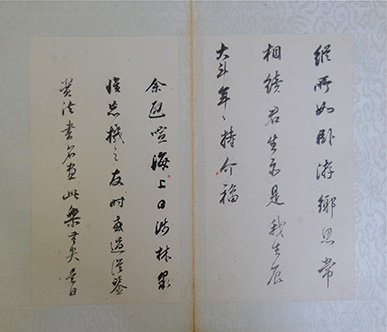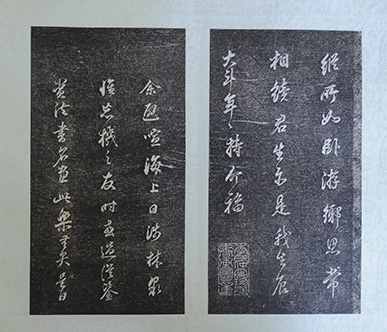Grace and resilience
Loss - acceptance and preservation
Projects for reproduction have long interested literati. Several aims are apparent in this: by multiplication to preserve from loss the achievement of the unique original, to distribute models of excellence, and to serve the interests of collectors and connoisseurs.
The earliest effective means of reproducing painting and calligraphy was by trace copies, where - owing to the transparency of silk and some papers - a new work was painted while glimpsing the original directly underneath it. Otherwise, a copy might be painted from observation, or less satisfyingly, from memory. The skill of the copyist was critical as he attempted to match the strokes of the original in respect to speed, density and every particular.
With calligraphy, the technology of reproduction developed to allow for more consistent copies that could be produced on a relatively large scale. Inasmuch as most calligraphy is purely black and white, an effective record of an original could be made by engraving on stone. This then served as a printing plate, but with the difference that the copy was not reversed from the plate, as with the technology for books. Nor was the stone surface itself inked. Instead, the copy was achieved by laying moist paper on the stone, then gently tapping ink over the surface. Being moist, the paper settled into the carved portions, so that the ink of ‘rubbing’ only echoed the stone surface, leaving the recessed carved characters to appear as un-inked white. While this proved to be a highly effective technique, there was still loss of subtlety - especially in later calligraphy that had important greys and other ink colours.
An example of rubbing and its relative veracity can be seen in this reproduction of an album by DONG Qichang 董其昌 (1555-1636). The copy preserves important aspects of the work, but softness and deftness is lost. A wry gesture lies in the placement of the seal of the collector who commissioned the engraving – it appears only in the copy and not in the original.
 |  |
| DONG Qichang 董其昌 (1555-1636) The Song of Leshou Hall Calligraphy, 1635; rubbing, 19th century Album of 16 leaves, ink on paper 21 x 11.8 cm Private collection |